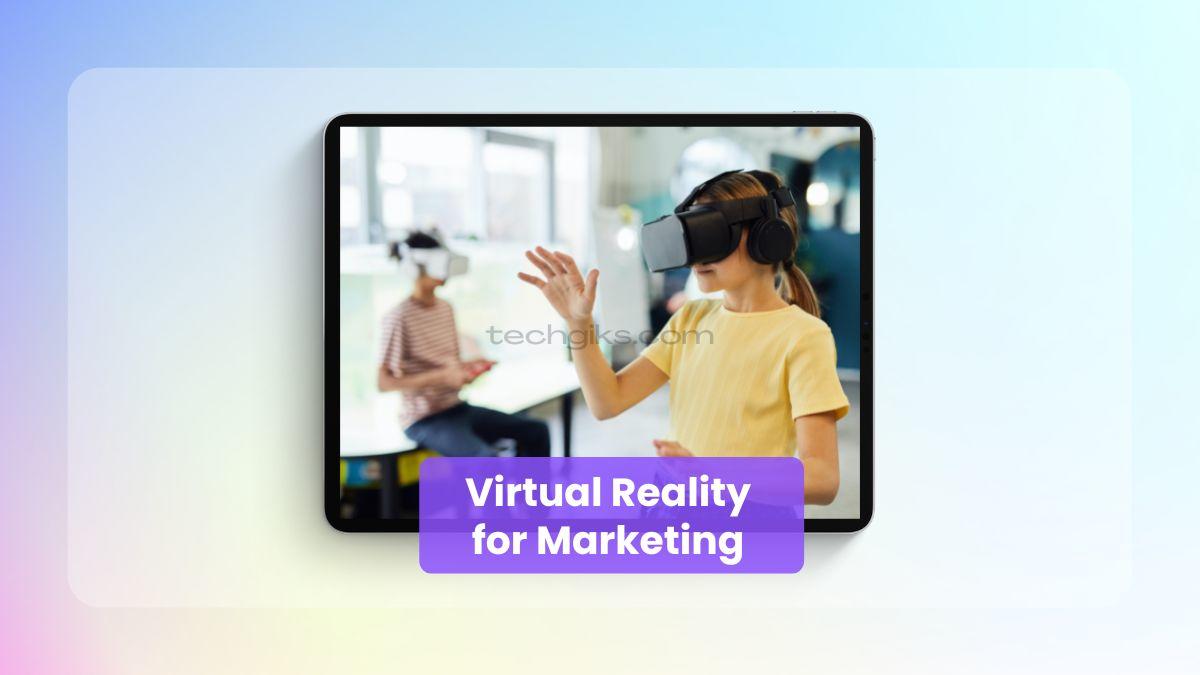Virtual Reality for Marketing
Virtual Reality for Marketing is slowly becoming the new trend in the digital marketing world. With new technologies emerging, marketers seek ways to make their content stand out. Virtual Reality allows users to experience and interact with digital content as if in another environment. Despite virtual Reality’s long history, it has only recently become affordable and accessible enough for widespread adoption. This blog post will discuss virtual Reality and why you should use it in your marketing strategy. Read on to find out more!
What is Virtual Reality?
Virtual Reality (VR) is a modern technology that enables users to experience and interact with digital content as if in another environment. It is a computer-generated simulation of a 3D image or environment that can be interacted with. A user can navigate and interact with the environment and items in that world. VR headsets view these virtual worlds as if you were right there. These headsets use software and hardware to create a computer-generated simulation of a 3D image or environment. The person using the headset imagines being present in this virtual environment. They can navigate the environment and interact with items as if they were there.

Why use Virtual Reality for Marketing?
Virtual Reality makes your content more engaging, interactive and memorable. VR headsets are used to view these virtual worlds and create an immersive experience for the user. VR opens up many marketing possibilities and offers brands a new way to interact with customers. It enables marketers to create a truly memorable and engaging brand experience.
VR allows brands to show off their products in a new way and brings them to life. Customers can explore and interact with these products as if they were there. VR can also help customers experience something they may not be able to in real life. For example, you can create a VR experience for travel and tourism companies to allow people to experience destinations they may not be able to travel to. So it will be best to use Virtual Reality for marketing in the future.
How does Virtual Reality work?
VR requires a headset to create a computer-generated simulation of a 3D image or environment. The headset creates a virtual environment using computer technology such as graphics processing units, detailed sound and sensors, a computer or processor, movement sensors, and a screen for each eye. For marketers, VR is powered by an immersive content creation tool. It allows you to create 3D content you can view on VR headsets.
VR is still in its early stages, and many VR tools and platforms have emerged. These VR tools and platforms enable marketers to create and publish VR content on various VR platforms. However, VR also requires a VR headset to view the content. VR headsets use software and hardware to create a computer-generated simulation of a 3D image or environment. In addition, these headsets use sensors to track your head movements and eye movements to create an immersive experience for the user.
Virtual Reality for Common People
Despite its long history, virtual Reality only recently became affordable and accessible enough for widespread adoption. VR can create a memorable brand experience and has excellent potential for future marketing campaigns. VR has many applications in the marketing world and can be used in many ways. We can create demonstrations, show off a new product or service, build brand experiences, or even for employee training.
VR headsets are used to view these virtual worlds and create an immersive experience for the user. VR headsets use software and hardware to create a computer-generated simulation of a 3D image or environment. In addition, these headsets use sensors to track your head movements and eye movements to create an immersive experience for the user.
How can Brands use VR to enhance Marketing?
VR can enhance many marketing campaigns, such as e-commerce, social media, events, and sales. VR E-commerce – VR can allow customers to see products from every angle and even try them in a virtual dressing room. With VR and AR, customers can see products differently, creating a memorable experience. VR Social Media Marketing – Social media marketing campaigns are becoming increasingly crucial for brands. We can use VR for social media marketing to create a truly immersive experience for your followers.
You can create 360-degree videos and post them on your social media platforms. You can also develop VR experiences for social media and bring your campaigns to life. VR Events – VR can create a virtual experience and allow people to attend an event without leaving their homes. It can offer a behind-the-scenes look at an event, let people explore an event venue, or even let them attend an event in a different country. VR Sales – VR can enhance your sales team’s presentation and show potential clients your products and services in a new way. You can use VR to showcase your products and services and give customers a taste of the experience.
Bottom Line
Virtual Reality is a technology that can take the technology industry to a whole new level. So, it may have many technological applications, including education, marketing, etc. We are near the phase where VR will be regular and used in most places, taking our experience to a new era and contributing to further development. So always stay updated about technology because it is the modern world, and technology is everything in today’s world. Hope you liked our article Virtual Reality for Marketing.
Hope you liked the article. Please check our website for interesting tech-related blogs.
Also, we could help you with anything related to your website like SEO, security and many more.
